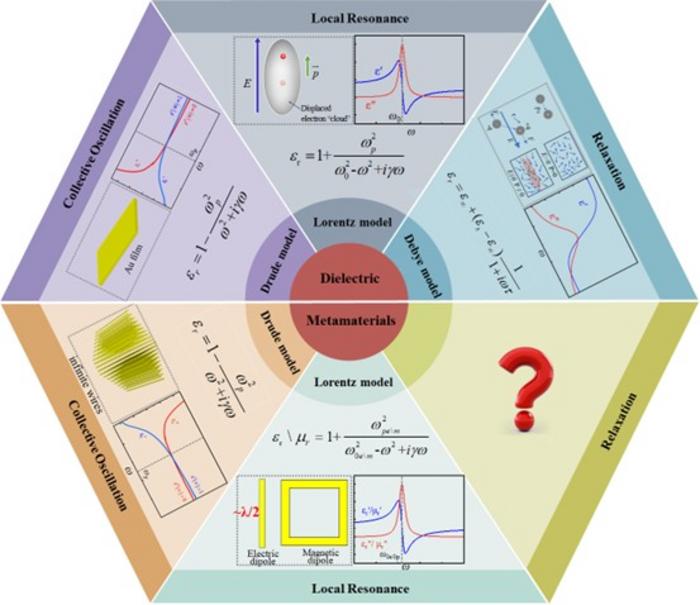In the realm of electromagnetic research, polarization remains a pivotal property of dielectric materials, intricately linked to their electrical characteristics. The phenomenon of polarization entails the dislocation of electrons within atoms or molecules, leading to a net dipole moment predominantly aligned with external electric fields. This property is not merely a superficial characteristic; rather, it forms the backbone of understanding electromagnetic behavior in materials, illuminating the underlying atomic interactions that dictate their macroscopic responses. Traditional dielectrics exhibit various polarization responses governed by sophisticated models—namely, the Drude, Lorentz, and Debye models—each resonating with distinct mechanisms of charge motion.
The substance of polarization is that within the absence of an external electric field, molecules exhibit a level of randomness due to thermal agitation, effectively negating their contribution to macroscopic polarization. However, an external electric field compels dipoles to align, thereby giving rise to observable polarization. This principle underscores the remarkable capacity of dielectric materials to respond to electromagnetic fields, rendering them fundamental in diverse applications, from capacitors to insulators. As one delves deeper into the physics of dielectric materials, a comparison with metamaterials reveals intriguing divergences in their electromagnetic behavior.
Metamaterials, designed to exhibit exceptional electromagnetic properties, such as negative permittivity, challenge the traditional frameworks of dielectric physics. Undeniably, polarization mechanisms play a role in the response of these materials, yet they have historically been analyzed with an incomplete theoretical framework. The notable absence of Debye relaxation in the context of metamaterials stands as a glaring omission, raising questions about the completeness of our understanding about their electromagnetic responses. Researchers are now advocating for including this model, positing that it could create a more holistic picture of dielectric behavior in metamaterials, enhancing both theoretical comprehension and practical application in advanced material design.
Recent strides in electromagnetic research have facilitated the introduction of a relaxation response model that adeptly integrates electrical and magnetic resonances within metamaterials. This innovative approach sheds light on how conventional understanding could be expanded through thorough research into both electrical and magnetic dipole oscillations, which resonate analogously to Lorentz-type resonances. As theorists embark on this advanced exploration, they unearth groundbreaking revelations, such as the phase variations in reflection governing these resonances, which suggest a linkage to first-order Debye relaxation dynamics. This discovery reshapes the current narrative surrounding metamaterial resonances, suggesting a nuanced relationship between resonance characteristics and the dynamics of wave propagation.
Moving forward, the research team has engineered a Quad-Elliptical-Arc (QEA) structure that acts as a meta-atom, optimizing electromagnetic properties by harnessing second-order Debye relaxation principles. This innovative structure exhibits remarkable dispersion control capabilities over a broad frequency range, opening up new avenues for ultra-broadband applications. The experimental results serve as a testament to the efficacy of this model; at precise frequencies, the interplay of surface currents within the QEA and the underlying ground plane demonstrates distinctly different resonance phenomena. Such findings not only validate the new model but also present a significant shift in how electromagnetic metasurfaces could be conceptualized and utilized henceforth.
Excitingly, the introduction of circularly polarized excitation sources facilitates intricate control over electron mobility within the elliptical arcs, mirroring orientation polarization trends observed in traditional dielectric systems. As the research progresses, results indicate robust electromagnetic functionalities that span across an extensive bandwidth, effectively generating second-order and higher processes in the context of relaxation phenomena. The prospects of fine-tuning geometric parameters can lead to bespoke electromagnetic performance, equipping researchers with the versatility to craft metamaterials tailored to specific applications.
The implications of this research reach far beyond immediate applications in telecommunications and materials engineering; they herald a broader renaissance in the theoretical landscape of metamaterials. By integrating Debye relaxation models into the framework, the research team not only bridges historical gaps in dielectric physics but propels forwards the potential applications into new spectral realms, stretching into THz and optical frequencies. The advancement of this theoretical framework has profound implications across interdisciplinary sectors, from acoustics to wave manipulation technologies.
Indeed, the ramifications of establishing a comprehensive understanding of electromagnetic parameters extend into realms of practical application, promising enhanced capabilities for devices that operate within various spectral ranges. Researchers envision applications that could significantly leverage these properties, including advances in wireless communications, sophisticated imaging systems, and cutting-edge sensors. As the scientific community continues to unravel the boundaries of metamaterial design, this research lays the groundwork for future innovations that enhance how we interact with electromagnetic fields.
As designers and theorists alike mold the parameters of metamaterials, the overlapping interplay of various resonances will likely inspire a new wave of technological advancements and applications unimaginable from traditional frameworks. The ability to seamlessly blend electrical and magnetic influences into a cohesive design language marks a compelling evolution in the field of electromagnetic materials, yielding prospects for adaptive systems that could redefine the fabric of modern technology.
The fusion of classical dielectric physics with advanced metamaterial design not only enriches the theoretical landscape but also fosters collaboration across a multitude of disciplines. By elucidating the correlations between theoretical models and practical applications, this research encapsulates the spirit of innovation that drives forward the frontier of artificial electromagnetic material design.
Ultimately, as this groundbreaking work disseminates through academic and industrial channels, it will undoubtedly inspire further inquiry and development within the realms of photonics, optics, and materials science, confirming that the future of electromagnetic research is poised for dynamic and revolutionary transformation.
—
Subject of Research: Integration of Debye relaxation into metamaterials for enhanced electromagnetic properties.
Article Title: 2nd-Order Debye Relaxation in Electromagnetic Metasurfaces for Wideband Dispersion Engineering.
News Publication Date: [Insert Date]
Web References: [Insert URLs]
References: [Insert References]
Image Credits: Xinmin Fu, Yajuan Han et al.
Keywords
Dielectric Materials, Metamaterials, Electromagnetic Properties, Polarization Models, Debye Relaxation, Electromagnetic Resonance, Dispersion Engineering, Photonics.
Tags: advanced dielectric responsescharge motion modelsDebye relaxation mechanismdielectric materials characteristicsDrude Lorentz Debye comparisonelectromagnetic fields interactionelectromagnetic polarization propertiesinnovative materials sciencemacroscopic polarization behaviormetamaterials researchnegative permittivity applicationsthermal agitation effects





